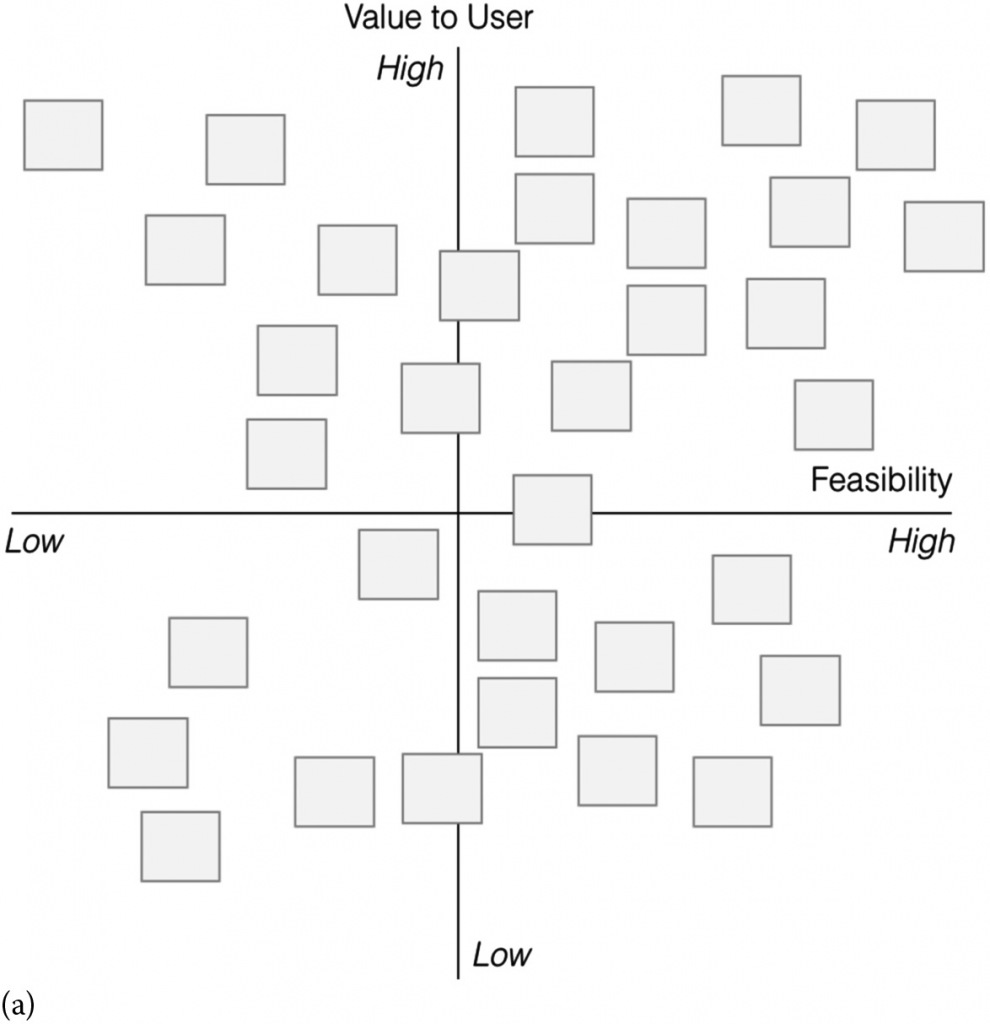Idea Prioritization in Design Thinking
Once you have generated these ideas, it is time to start prioritizing the ideas so that you can filter the ones you could quickly prototype and test with the users. Prioritization could be done in many ways.
◾ Dot Voting. Give 3-5 voting dots to each member and ask them to place them on the top idea clusters/ideas. As teams place their votes, you’ll see an emerging theme on the top ideas or idea clusters.
◾ 2 × 2 Matrix. One quick way of prioritization is a 2 × 2 matrix with
value (to
◾ Evaluation Criteria. A more complex and sophisticated way is to identify evaluation criteria, which means identifying some variables which are important for the solution. These may include usability, desirability, technical feasibility, duration, simplicity, business value. Each of
the selected variables is assigned weights and the weighted average is calculated to rank ideas. To have agility in execution, we’ll use the 2 × 2 matrix method of prioritization.
1. Template
Figure 4.3a,b shows how the ideas may look like on the wall as you prioritize using a 2 × 2 matrix.
2. Example
The figure below is a snapshot from a real-life session that showcased idea clusters prioritized on a 2 × 2 matrix.

3. Guidance
Session Lead
Name each of the idea clusters to easily identify the ideas.
Write the idea-cluster names and selected top ideas on sticky notes. Take each idea-name sticky note and bring it to the 2 × 2
Once the idea has been evaluated on the value axis, staying at the same level, move the idea from left to right on the feasibility scale and ask the team about their view of how feasible the idea is to implement. As you think about feasibility, consider all aspects of feasibility, namely, technical capability, access to expert knowledge, expected duration to implement and any other aspect that influences feasibility. Based on team consensus, place the idea on the prioritization board. Repeat the process with all the idea clusters and selected ideas.
Most Valued Ideas
As highlighted in Figure 4.3b, the ideas on the top quarter of the prioritization matrix are the most valued ideas from the perspective of the user based on your understanding. From the user’s perspective, realizing these ideas to create a solution would be a tremendous value to the user. However, not all ideas which add value to the users are feasible to implement or viable from a business perspective though.


Most Practical Ideas
The ideas which are both desirable by the user as well as feasible are the ones in the top right corner of the prioritization matrix, as highlighted in the figure above (b).
The team should focus on these ideas to move forward.
Note that value to
3.1 Document Assumptions
After the session, the session lead should ask the team to write down all the assumptions that you are making and record those assumptions in assumptions template in Stage 4.
3.1 Document Assumptions
After the session, the session lead should ask the team to write down all the assumptions that you are making and record those assumptions in assumptions template in Stage 4.
3.2 Review Prior Steps
Review the prior steps and adjust as needed with the consensus of the team.